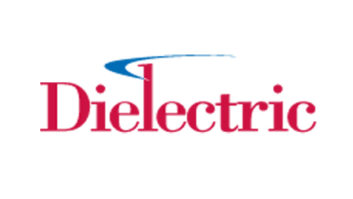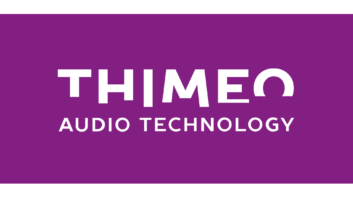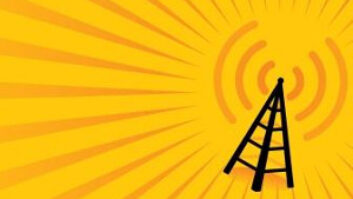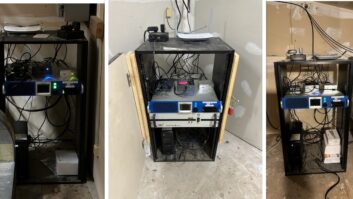Ibiquity Digital Corp. has cleared an important hurdle on the road to commercial rollout of its in-band, on-channel digital audio broadcasting system.
The standards-setting body evaluating the viability and practicality of implementing IBOC digital radio has studied Ibiquity’s FM system and declared it “a significant improvement” over analog.
The DAB Subcommittee of the National Radio Systems Committee has recommended that the FCC approve the system for use in the United States, specifically citing its “greatly reduced impact of multipath interference (for mobile, portable and fixed receivers alike); superior resistance to co-channel and adjacent channel interference; support for enhanced data services and improved audio quality.”
In a more than 200-page document released in late November, the NRSC achieves a long-stated goal. After nearly a decade of encouraging IBOC development, the NRSC now states definitively that IBOC has significantly enhanced performance over analog.
‘Remarkably robust’
“A lot of the data is quantifiable. We have analog data and new digital data that can be compared handily,” said NRSC DAB Subcommittee Chairman Milford Smith.
“The whole goal is to come up with something that’s better than what we’ve got. This is a remarkably robust system that provides a lot of advantages for the listener.”
By approving the system, the committee states, the FCC would be “charting the course for an efficient transition to digital broadcasting with minimal impact on existing analog FM operation and no new spectrum requirements.”
Ibiquity President Robert Struble called the report a validation of Ibiquity’s FM system. He hoped the FCC would soon put the report out on Public Notice and seek public comment.
NAB President and CEO Eddie Fritts said the endorsement is “a key step in moving broadcasters into the digital era.”
Unclear immediately after the NRSC action was what the FCC would do with the report. Several sources believed the commission would seek public comment on the document as a first step, then perhaps ask the NRSC to begin a formal standards-setting process. The commission easily could craft a blanket authorization for stations to implement IBOC, sources said.
Any of these scenarios would fit with Ibiquity’s goal of having transmitter partners Harris, Broadcast Electronics and Nautel show IBOC-compatible exciters and transmitters at NAB2002 in the spring.
Tradeoffs
However positive the NRSC is on IBOC, members were careful to say there will be tradeoffs in terms of compatibility between the digital signal and its impact on adjacent channels.
In the Ibiquity system, the digital sidebands of the host station sit in the first adjacent channel of the next station. The amount of digital energy being transmitted is relatively low, around 23 dB, but Ibiquity told the NRSC when it submitted its test results that field test results indicate there could be some impact on analog first-adjacents (RW, Sept. 12.)
Smith and NAB Science and Technology Vice President John Marino said the NRSC believes the tradeoffs are modest and acceptable.
“Some of the earlier versions of IBOC systems were horrific in terms of compatibility,” said one source.
In its report, the NRSC wrote this about the implementation tradeoffs:
“With respect to the main channel audio signal, evaluation of test data shows that a small decrease in audio signal-to-noise ratio will be evident to some listeners in localized areas where first-adjacent stations, operating with the FM IBOC system, overlap the coverage of a desired station.
“However,” the committee continued, “listeners in these particular areas may also be subject to adjacent channel analog interference, which will tend to mask the IBOC-related interference, most appropriately characterized as band-limited ‘white’ noise, rendering it inaudible under normal listening conditions.
“Also, all present-day mobile receivers include a stereo blend-to-mono function dynamically active under conditions of varying signal strength and adjacent channel interference. This characteristic of mobile receivers will also tend to mask any IBOC-related noise. The validity and effectiveness of these masking mechanisms is apparent from the rigorous subjective evaluations performed on the data obtained during the NRSC’s adjacent-channel testing.”
The committee provided further findings about the impact on non-host analog signals:
“Co-channel interference: no impact on analog reception.
“First-adjacent channel interference: listeners within the protected contour should not perceive an impact, but a limited number of listeners may perceive an impact outside of the protected contour under certain conditions.
“Second-adjacent channel interference: NRSC tests indicated that some receivers (with performance similar to the NRSC analog automotive and portable receivers) should not experience an impact on performance due to second-adjacent channel hybrid FM IBOC interference, however a very limited number of receivers (with performance similar to the home hi-fi receiver used in the NRSC tests) might experience a negative impact for -30 to -40 dB (and more negative) D/U ratios.”
Listeners should not perceive an impact on analog host station reception in the FM hybrid mode, the NRSC states in its report.
More data
The NRSC has yet to evaluate the system for unimpaired audio quality; it will do so when Ibiquity delivers more test results after integrating its Perceptual Audio Coding algorithm rather than MPEG-2 AAC, its former audio codec.
Questions remain about the system’s effect on analog FM subcarriers. Receiver results varied widely, sources said. As a result, Ibiquity, National Public Radio and the International Association of Audio Information Services have agreed to perform additional tests to determine how certain SCA receivers will perform after IBOC is implemented on host and adjacent channel stations. Results would be given to the FCC directly, sources said.
Smith said this latest effort to evaluate IBOC was the most comprehensive so far, from the sheer amount of data the group studied.
The evaluation working group, a subset of the DAB Subcommittee, reviewed lab and field test results of Ibiquity Digital Corp.’s FM IBOC in eight performance areas: audio quality, service area, durability, acquisition performance, auxiliary data capacity, behavior as signal degrades, stereo separation, flexibility and the IBOC signal’s impact on the host and neighboring stations.
The report is the result of efforts from several volunteers, led by Dr. Don Messer of the International Broadcasting Bureau.
The NRSC hoped to begin evaluating Ibiquity’s AM system at its next meeting in mid-December. It hopes to have that report completed by early March.
Also in November, the International Telecommunication Union initially endorsed Ibiquity’s FM system for use abroad and intended to put a draft recommendation for a vote before its 189-country membership.
In April, the ITU had endorsed Ibiquity’s AM system (below 30 mHz) for use in other countries along with the Digital Radio Mondiale AM system for long-wave, medium-wave and shortwave use.
The full NRSC report is available on its portion of NAB’s Web site, at www.nab.org/SciTech/Fmevalreportfinalfinal.pdf.











